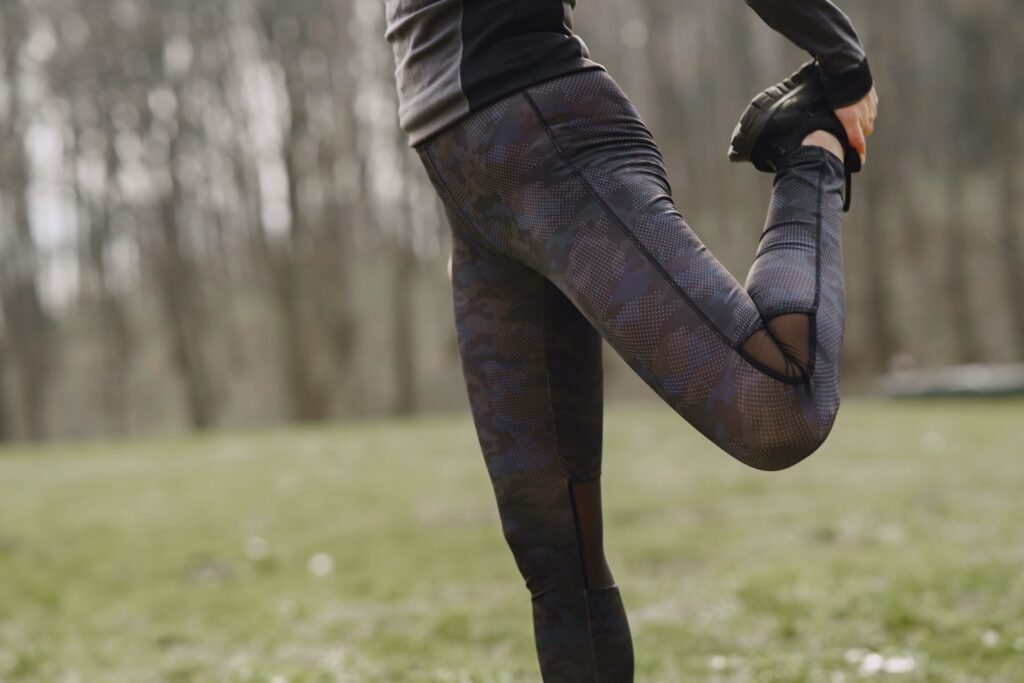So you’re not sure about trail running, huh? Well let me tell you about five benefits of trail running and why you should give it a shot.
Running through the woods or in the mountains can benefit you in a lot of ways. It’ll make you more resilient as a runner, and the constant hills will make you stronger. Trails can be beneficial for your mental health, and they’re so much more interesting than roads. You might also find them a nice break from the elements, on misty or windy days.
I’m blessed to live close to a network of trails, and I make it a point to get out there at least once a week for all of those reasons and more.

Trail Runners Are More Resilient
One of the key benefits of trail running is that it makes you more resilient as a runner and it provides some protection from injuries.
When you run on flat surfaces, you put your body through a limited range of motion. Your foot typically hits the ground at a consistent angle and you rarely engage some of the stabilizing muscles.
The end result is that your joints – hips, knees, ankles – can become susceptible to injury. And no one wants that.
When you run on a trail, the actual mechanics of running are a little bit different.
The ground is varied, and your foot will hit it at different angles. You’ll incorporate some lateral movement as you sidestep obstacles and run down hills. At times, you might lift your foot up more fully to avoid a rock.
The end result is that you put your lower body through a fuller range of motion. Those stabilizing muscles around your joints get worked out more often, and they become stronger and more resilient.
This research study, Trail Runners: Neuromuscular and Biomechanical Insights, explores this very issue. The authors wanted to explore the impact of trail running on runners’ bodies to better understand how it might or might not protect them from injury.
The paper describes three different studies comparing road runners to trail runners. They found a number of differences in trail runners, such as greater ankle flexibility, shorter stride length, and increased activation of glutes.
Ultimately, they concluded:
Regular trail running on natural, irregular terrain appears to have positive, long-lasting effects on the neuromuscular regulation of running biomechanics.
Bean (2018)
In other words, trail running is good for you.
Keep in mind that it’s no panacea. It won’t protect you from all injuries or make you the world’s most resilient runner. But I think this is reason enough to incorporate trails into your weekly routine.
Trail Running Makes You Stronger
Another benefit of trail running is that it makes you stronger.
A common piece of advice for promoting leg strength and speed is to run hills. Outside of hill training, most road runners probably avoid hills and try to find nice, flat stretches of pavement.
But that’s not necessarily the best thing for your training, though. A good trail run probably involves a decent amount of elevation gain. As a result, you’ll spend a good amount of time running up and down hills. You can choose to spring these or take them slow, but either way they’ll help make you stronger.
Here are some statistics from my own running routes to put things in perspective.
I’ve got a 3 mile loop that I run near my house on the street. The loop itself has less than 100 feet of elevation gain. Including the huge hill that I jog up to get home, my total elevation gain for a 3-4 mile run is 130-140 feet.
Compare that to an easy trail run in the South Mountain Reservation nearby. Last week, I did an easy trail run. It was a little over 4 miles, and I clocked 375 feet of elevation gain. And that wasn’t even the hilly part of the trails. On a ten mile long run, I’ve clocked over 1,000 feet of elevation gain.
What do all these feet of elevation gain mean? Stronger legs and, ultimately, quicker running. Hills are good, and trail running means more hills.

Another Benefit of Trail Running Is Your Mental Health
Besides the physical benefits of trail running, you’ll also enjoy some mental health benefits.
There’s something inherently calming and soothing about spending time outside in nature. You don’t have to worry about traffic lights or dodging cars, and there are no harsh sounds like car horns.
And while I like hiking and trail running, this isn’t just my opinion. There’s research to back it up.
Barton and Pretty conducted an analysis of existing research studies to look at the effect of exercise in natural environments on mental health – What Is the Best Dose of Nature and Green Exercise for Improving Mental Health? A Multi-Study Analysis.
The results show acute short-term exposures to facilitated green exercise improves both self-esteem and mood irrespective of duration, intensity, location, gender, age, and health status.
Barton and Pretty (2010)
In other words, exercising in nature improved people’s self-esteem and their mood.
Trail Running is More Interesting
On a less science-y and less factual note, trail running is also more interesting than road running.
I’ve run the same route on the roads near my house dozens of times, and it’s usually pretty much the same. Maybe a car here or there has moved, or there’s a dog out for a walk, but it’s the same setting.
I’ve been out to the same trails in South Mountain Reservation just as often, and they’re always changing. Every few months, the seasons change and the trails are completely different. If you run a trail in the summer, you might hardly recognize it if you run it again in the winter.
The sights and sounds are so much more pleasing and interesting. On the roads, I usually run with headphones in so that I can zone out to a podcast. But on the trails, I often run with no headphones. Chirping birds and rustling chipmunks are all the soundtrack I need.
The scenes are also more enjoyable to look at. I’ve never stopped on the road to take a picture of a sidewalk. But it’s not uncommon for me to see something along a trail run – a tree dropping its leaves or a scenic view of a lake – that makes me want to stop for a moment and capture it.
Running on the Trails Protects You From the Elements
One final benefit of trail running is that it can offer you some minor protection from the elements.
Trails are typically surrounded by trees – although they may be more or less full of leaves, depending on the season. But this means you’re not as exposed as you otherwise would be on the street.
I have fair skin, and I burn easily. So if I go out for a run when the sun is up, I typically have to lather up with sunscreen. In the summertime, with the leaves fully grown in, I can spend an hour or two out on the trails and not have to worry about it. That’s not to mention the impact the shade has on temperature.
The trees also block out light rain and snow, and they can cut down on wind. This can be a huge if it’s a cold day. After a few miles of running on the road on a misty morning, I’ll get home and my shirt will be soaked through. But underneath the canopy, it’ll feel like nothing.
Of course, you should also be aware that truly bad weather is no time to be on the trails. I wouldn’t want to be out in the forest during a hurricane, and after heavy rain the trails can be too muddy to run. But for those days with moderately bad weather, the trail can be a nice place to be.
Give Trail Running a Try This Week
So there you’ve got at least five benefit of trail running. On the one end of the spectrum, it makes you a better runner. On the other end, it helps make your run more enjoyable.
While I’m not suggesting that you give up road racing altogether, you should definitely work the trails into your regular schedule. I try to hit the trails at least once a week as part of my regular training. If I’m not in the middle of a training plan with workouts, that could be two or three times a week.
You might also want to take a look at this: A Guide to Trail Running: the What, Why, and How.
Try it out, and let me know how it goes in the comments below. I’d love to hear what you think of trail running!
